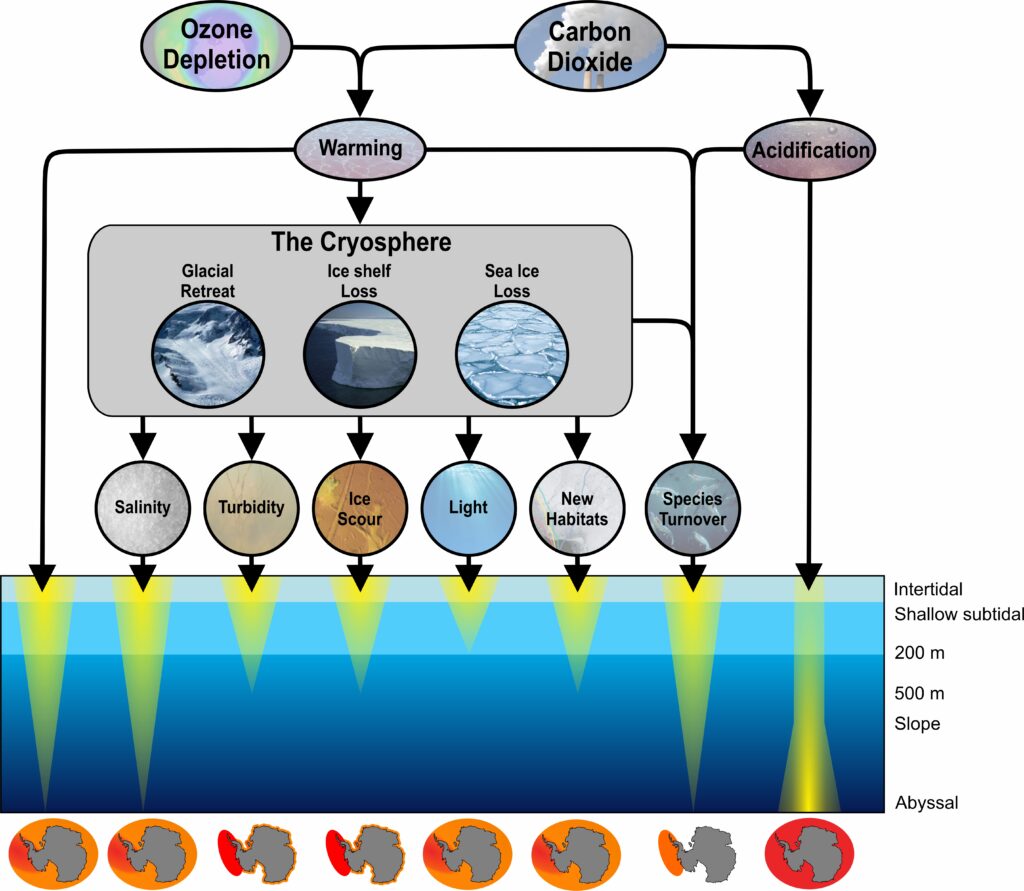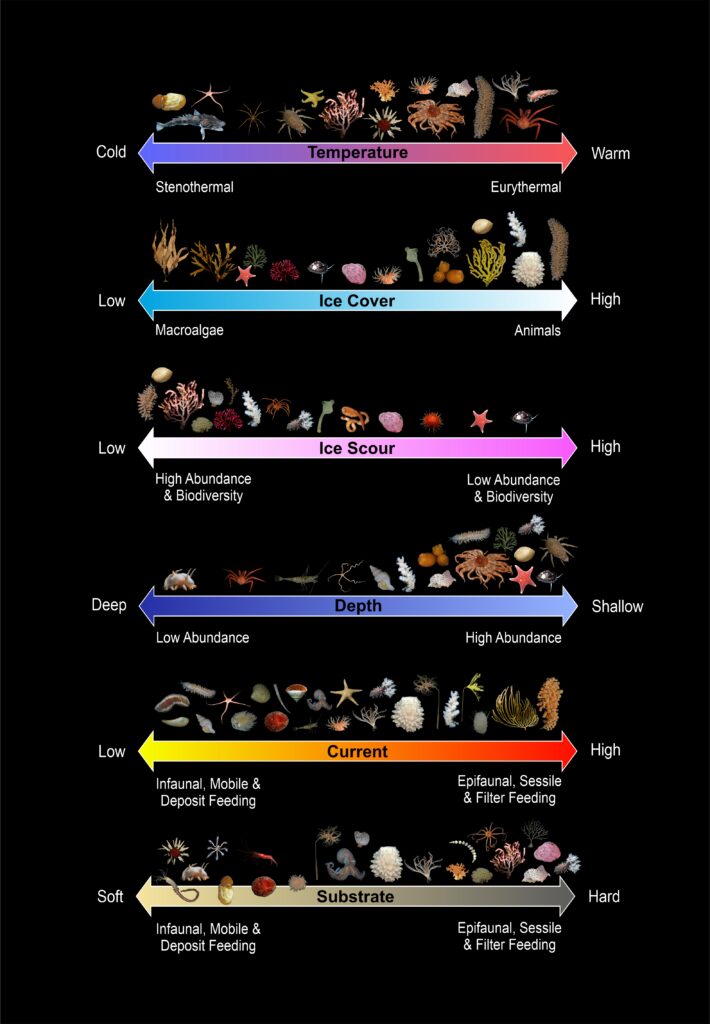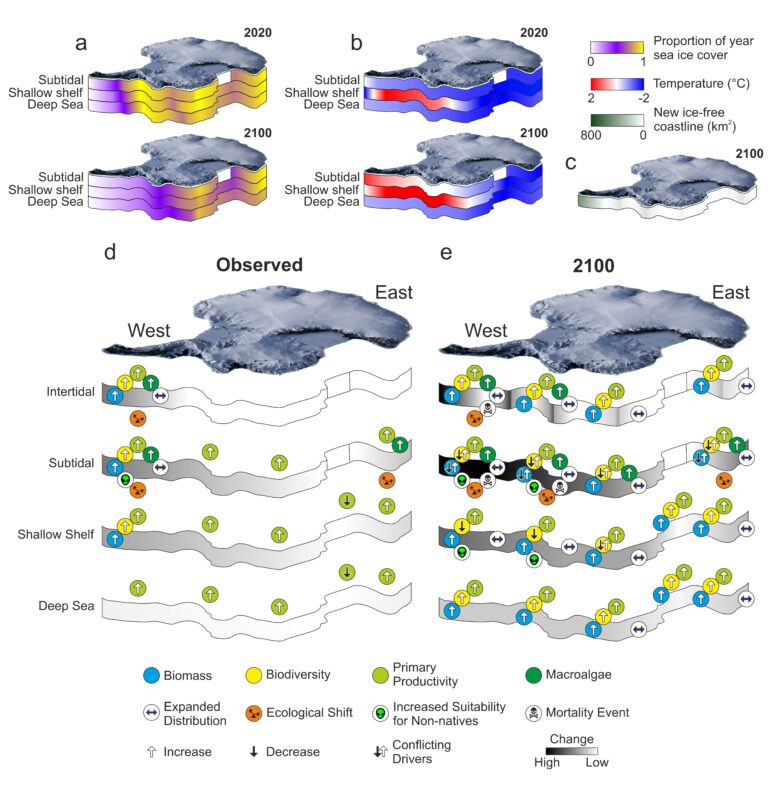Antarctic benthic ecological change – Huw Griffiths
“Antarctic benthic ecological change” is an invited review summing up our current knowledge of ongoing and future impacts of environmental change on the seafloor (benthic) animals and plants around Antarctica. The benthic community around Antarctica is diverse and highly endemic. These cold-adapted species are under threat from local and global drivers, including warming, acidification and changes to the cryosphere. We summarized observed, experimental and modelled Antarctic benthic ecological change. Warming, glacial melt and retreat, and reduced ice cover are causing regional benthic biomass to increase or decrease, depending on the additional influences of ice scour, turbidity and freshening.
Additionally, the dominance of previously cold-restricted or light-restricted species is increasing, and several ecological tipping points have already been breached, leading to ecological phase shifts in some habitats. The largest changes have been observed in communities in the shallows of the West Antarctic Peninsula, notably change to distribution, biodiversity, biomass and food webs. Models based on observational and experimental evidence indicate that these changes will spread deeper and eastwards throughout this century. Available data are primarily limited to a handful of shallow-water taxa; thus, future work will need to involve multispecies observations and experiments encompassing multiple drivers to understand community and ecosystem responses, and autonomous monitoring techniques to fill geographical, bathymetric, seasonal and taxonomic gaps; advances in environmental DNA and artificial-intelligence-based techniques will help to rapidly analyse such data.


The full paper may be (open) accessed here.
The author of this article Huw Griffiths (British Antarctic Survey)

